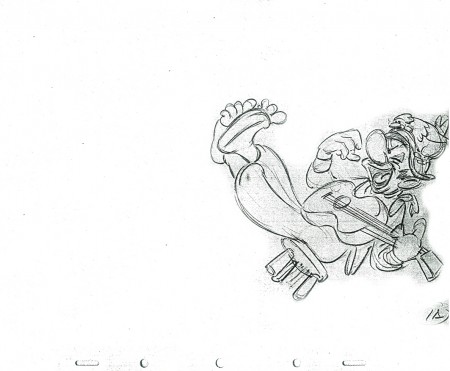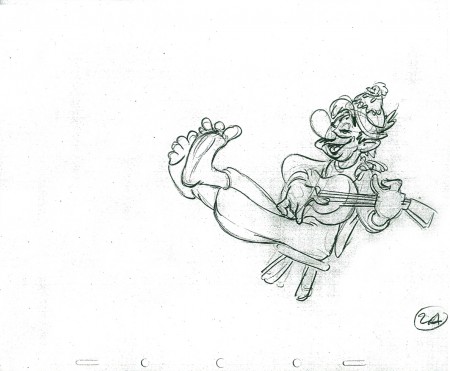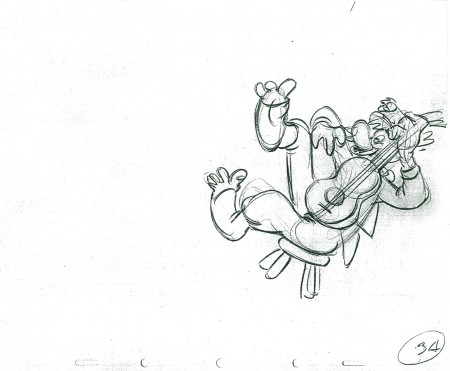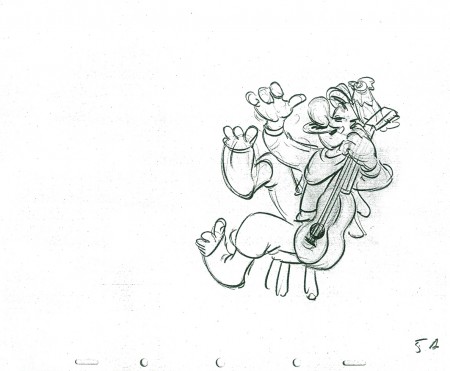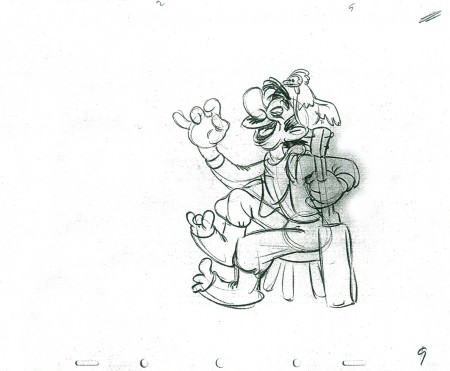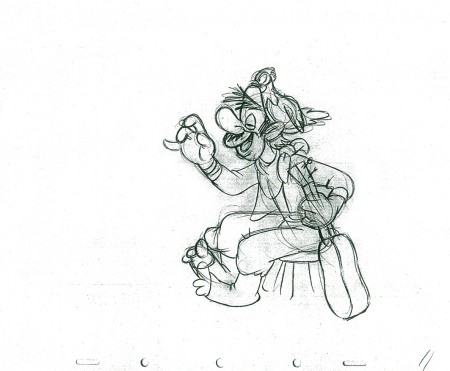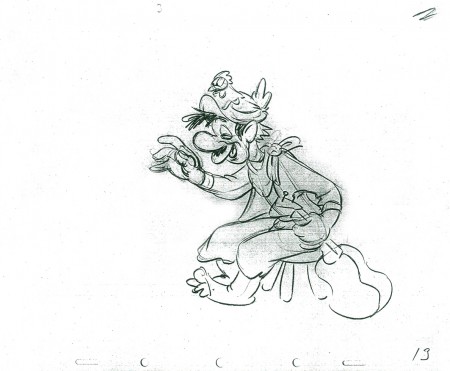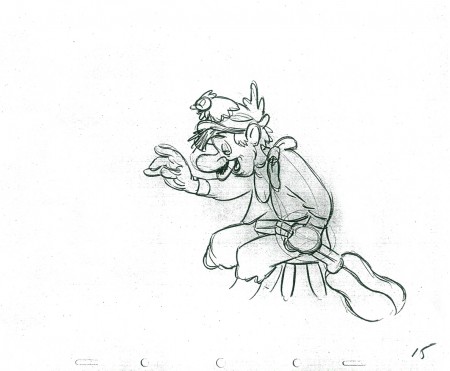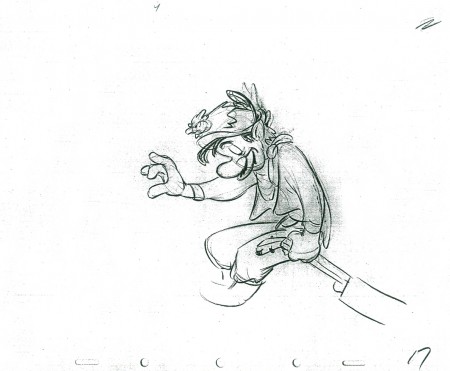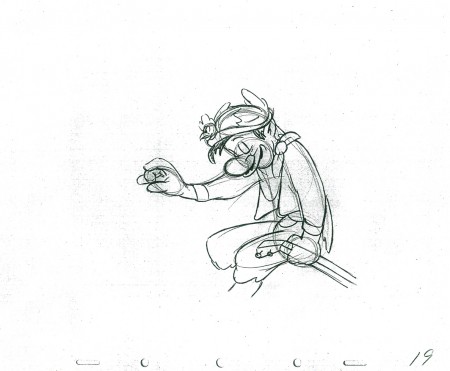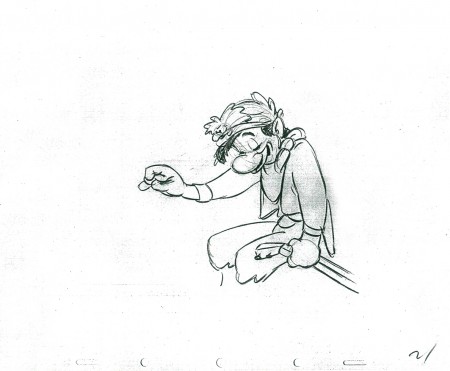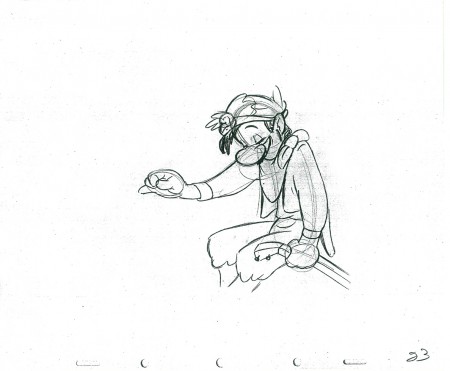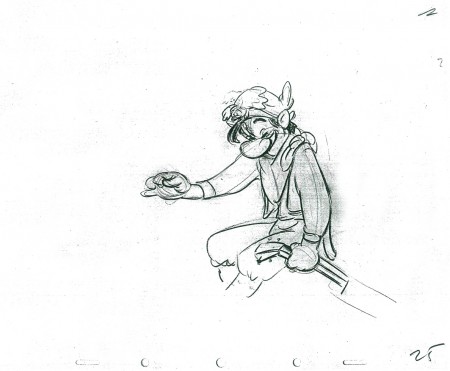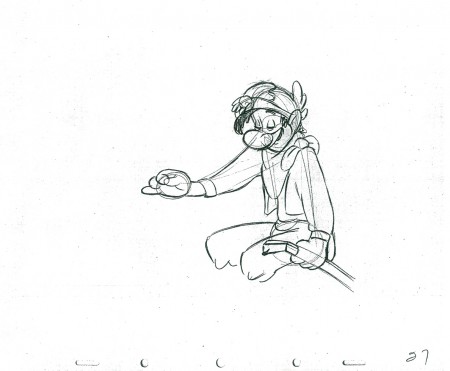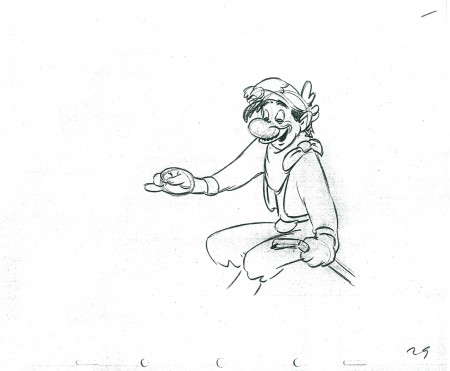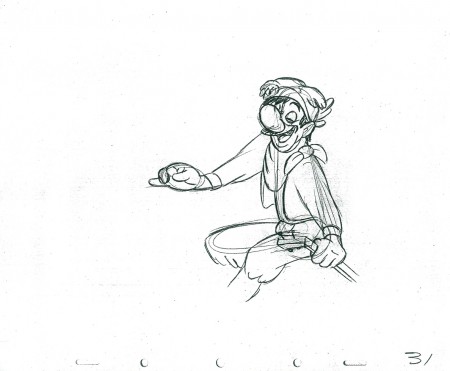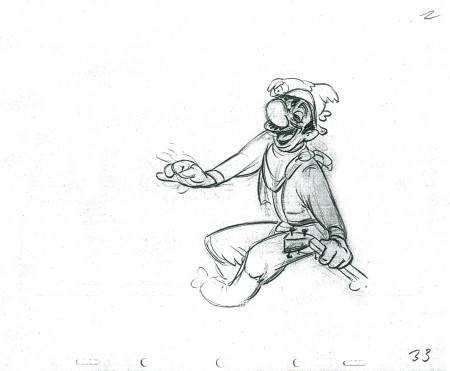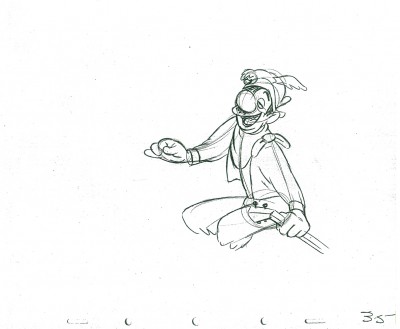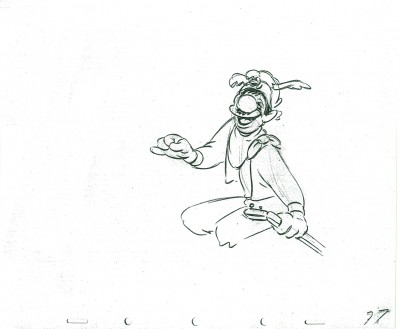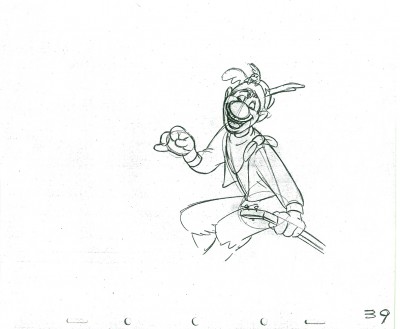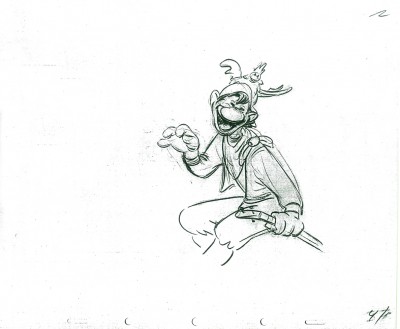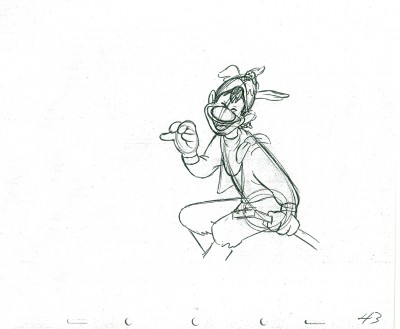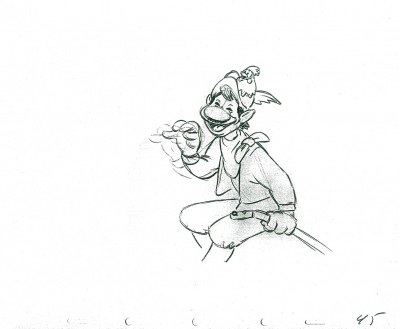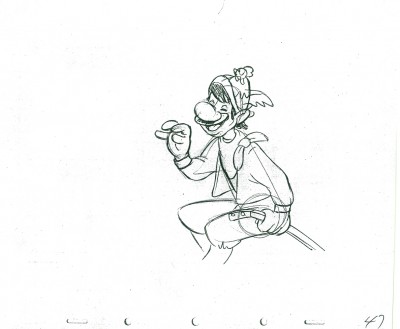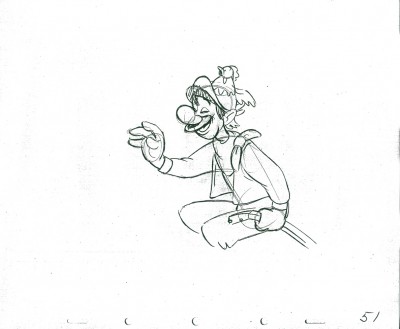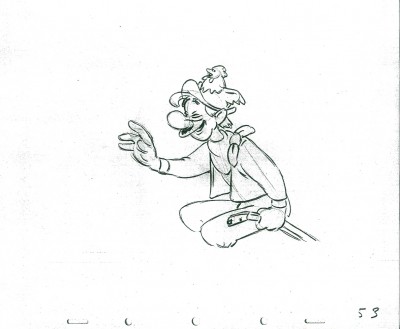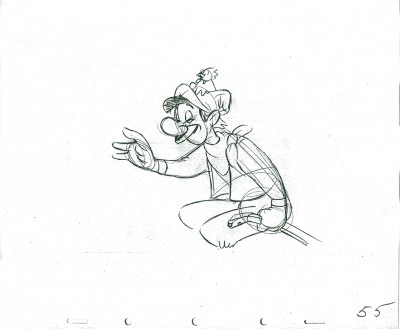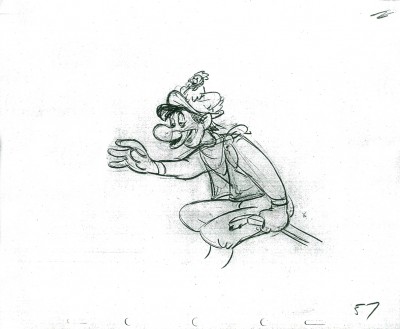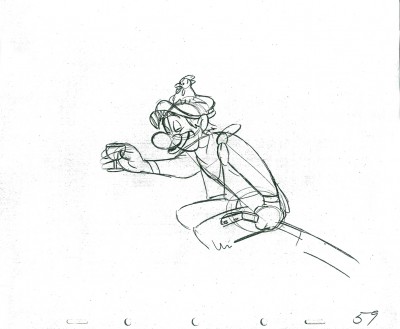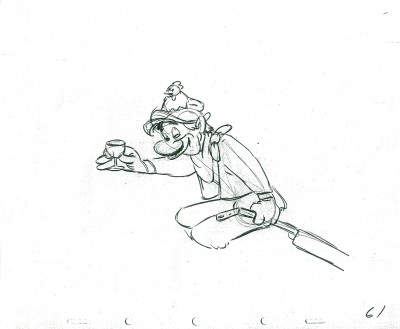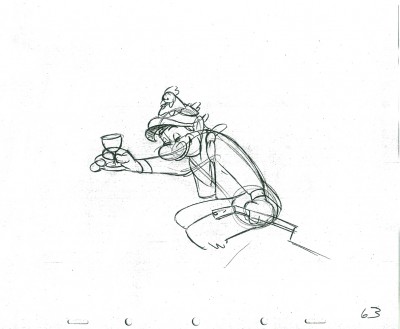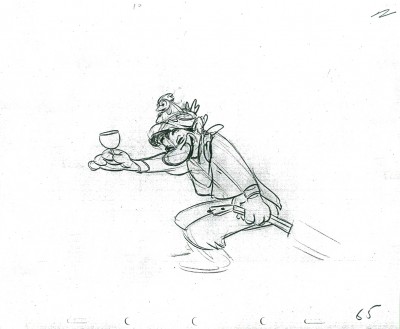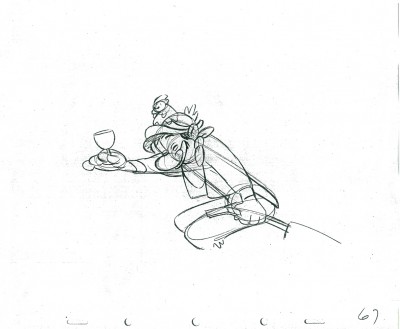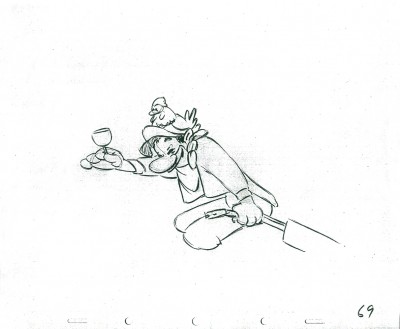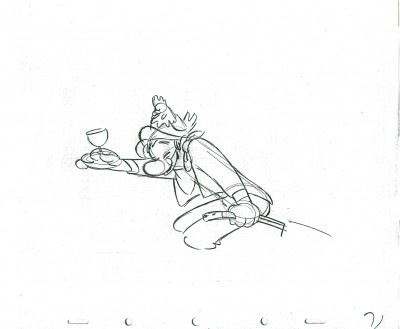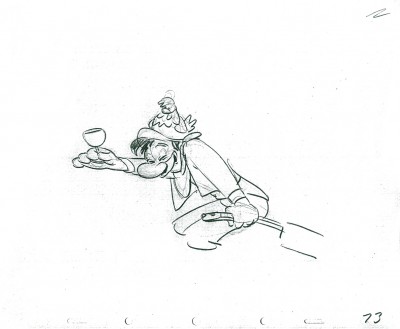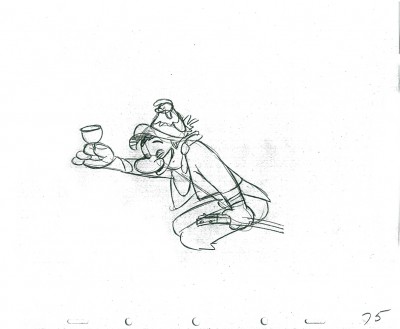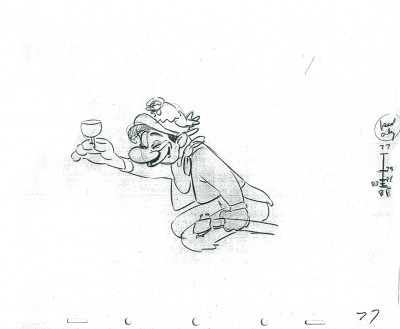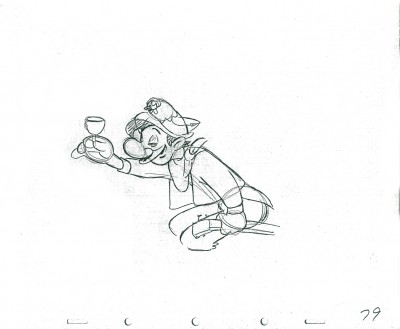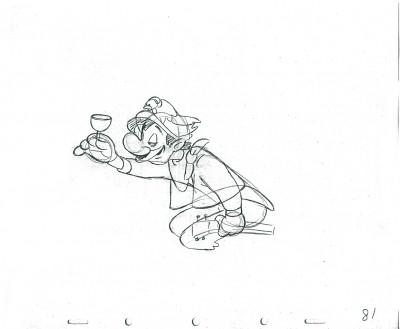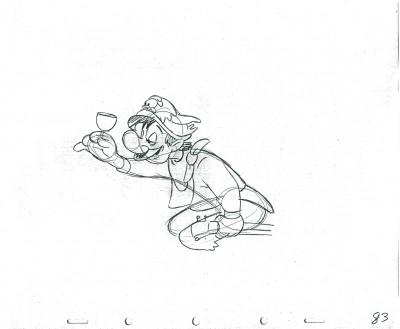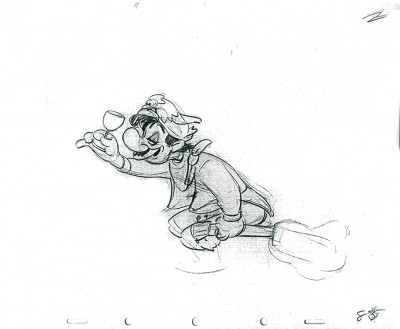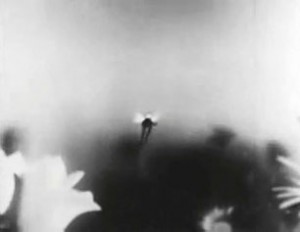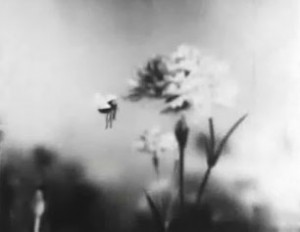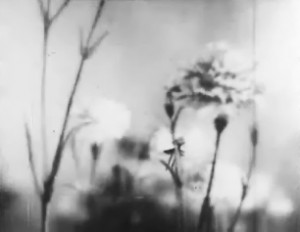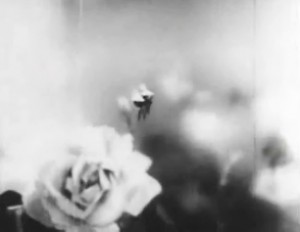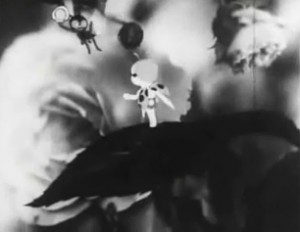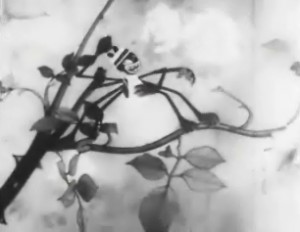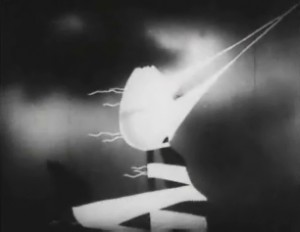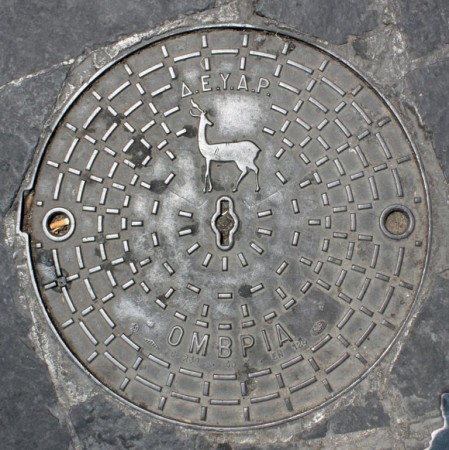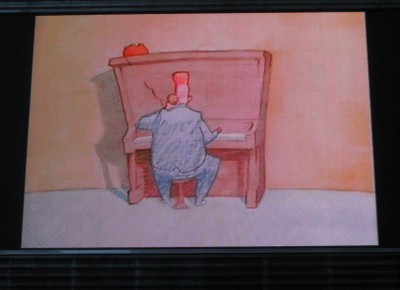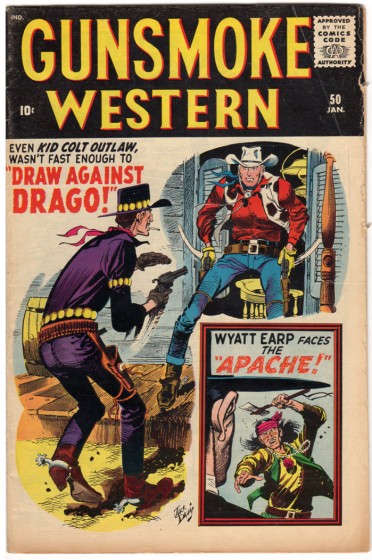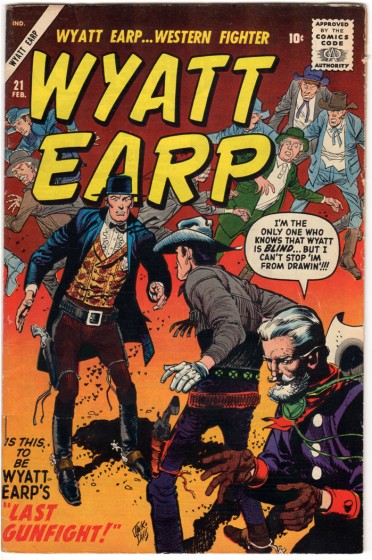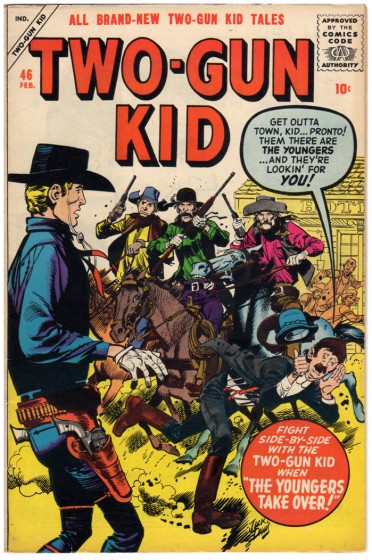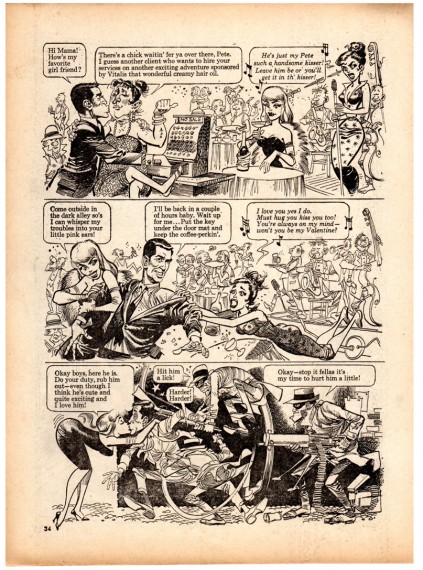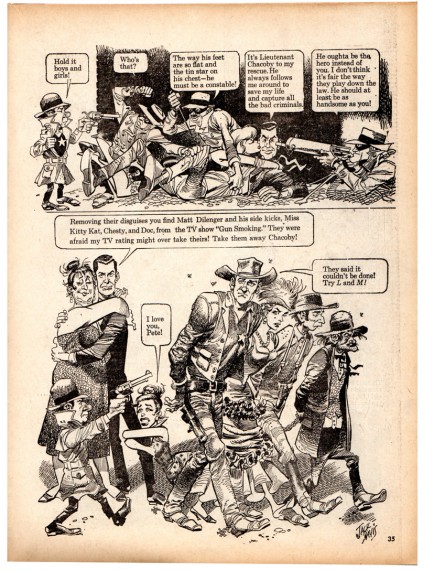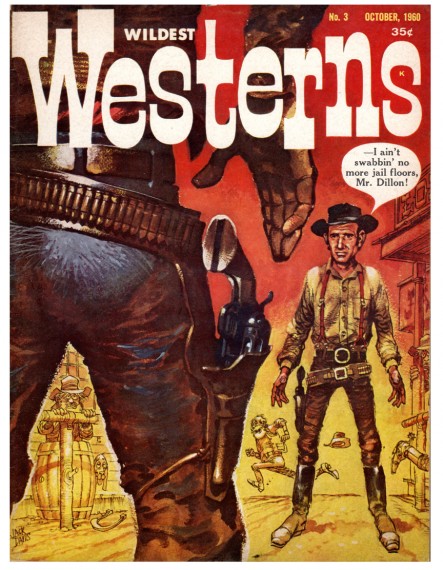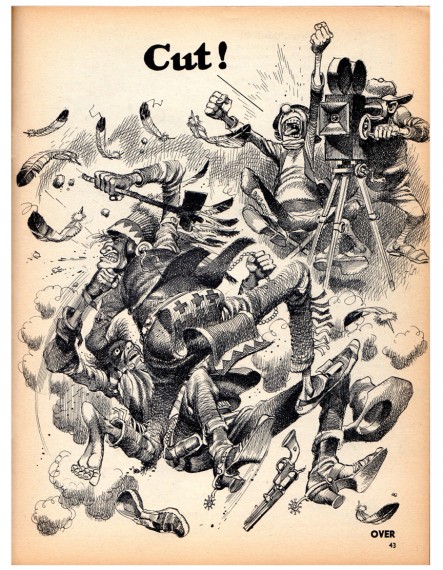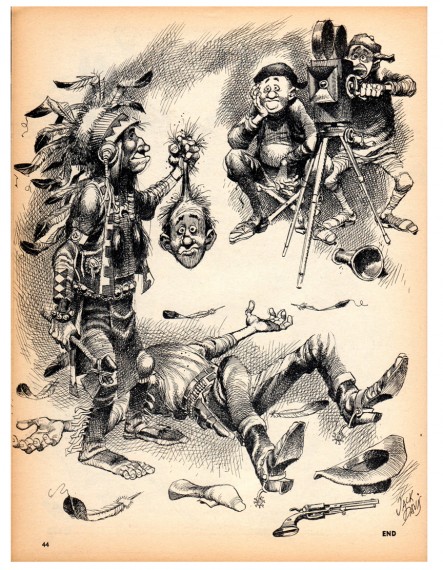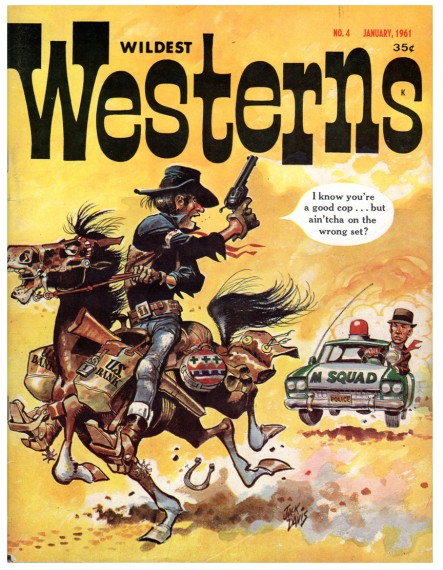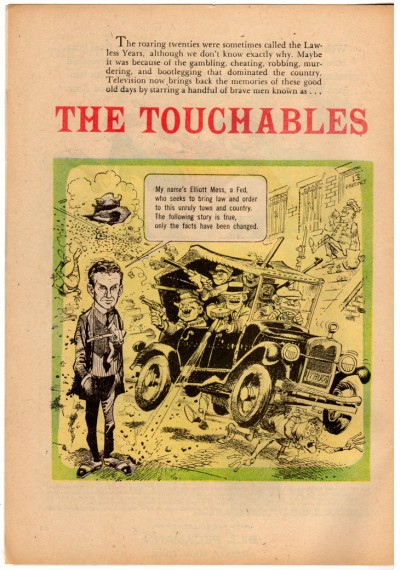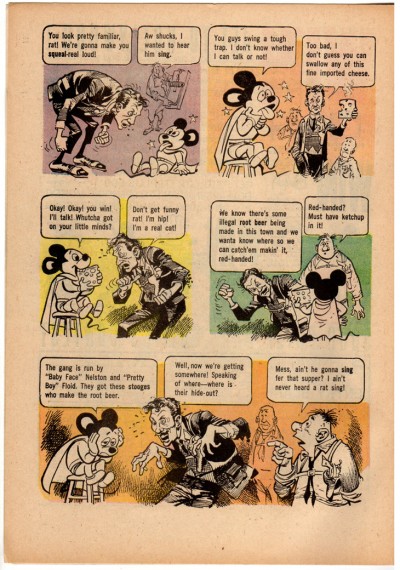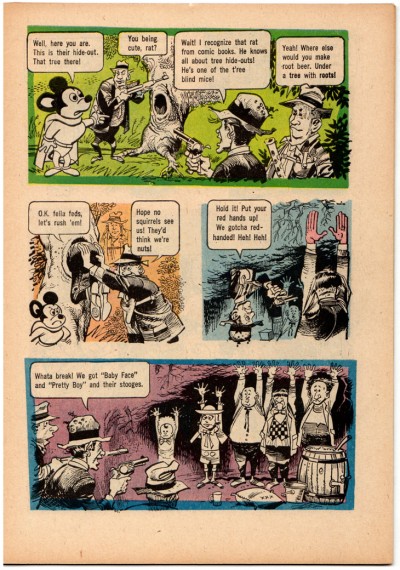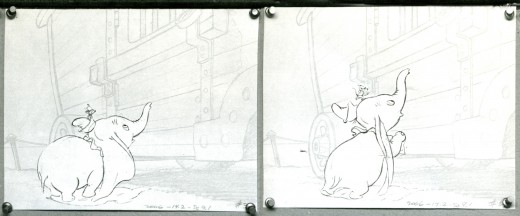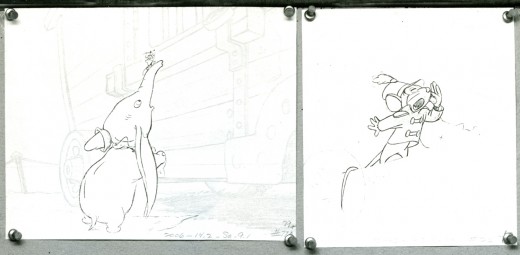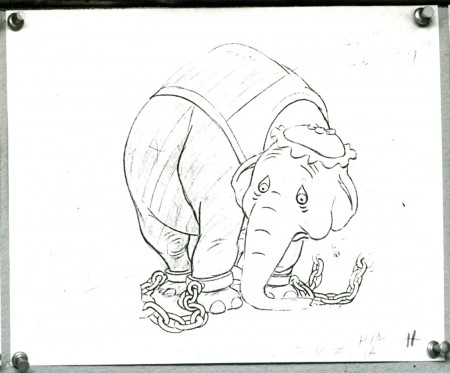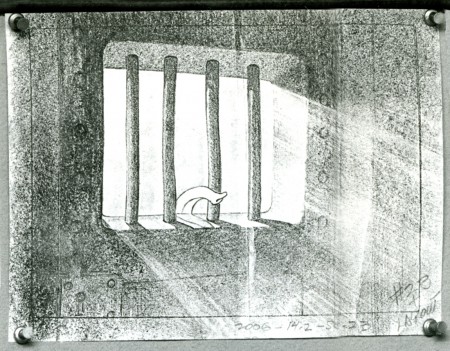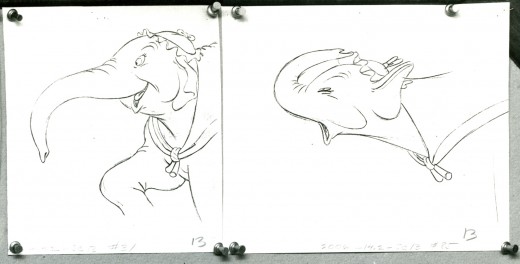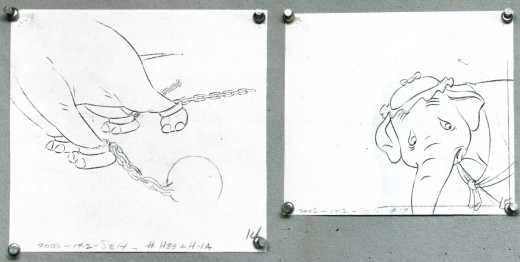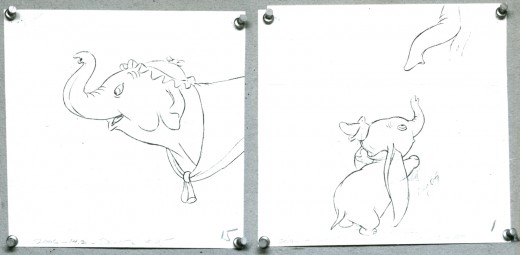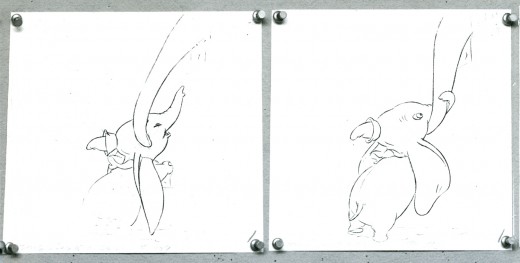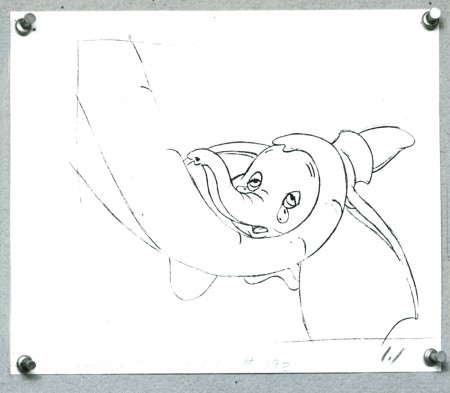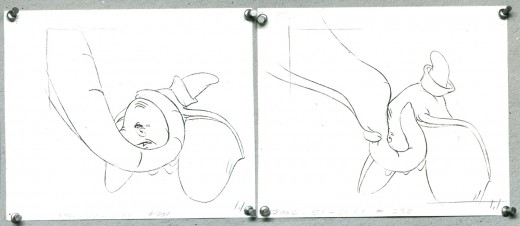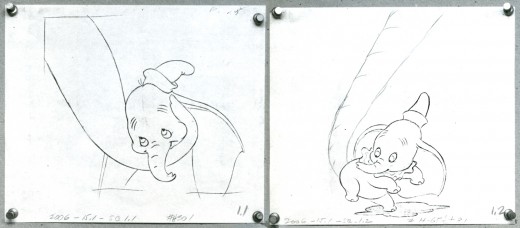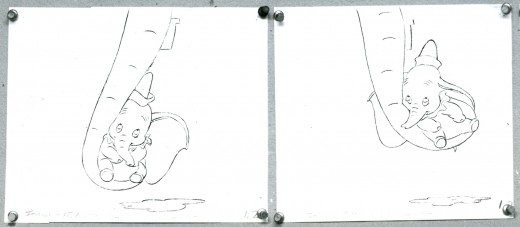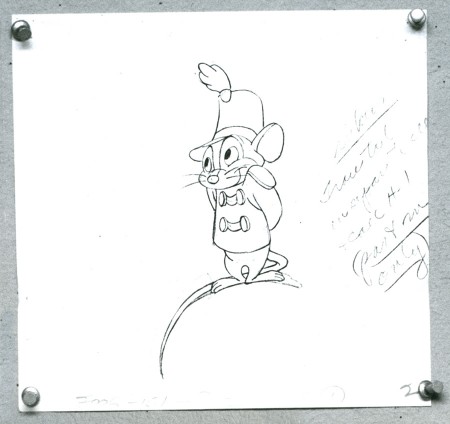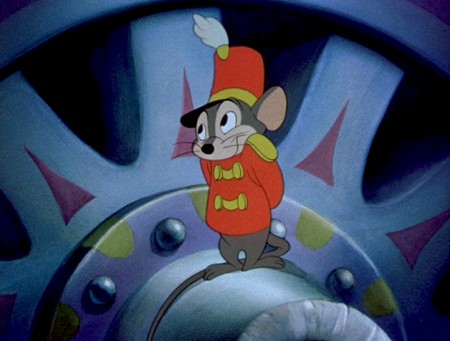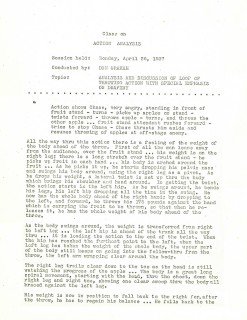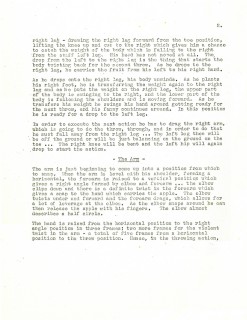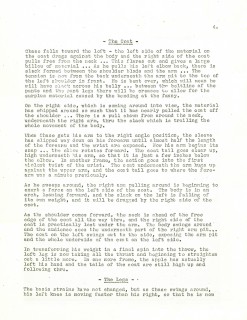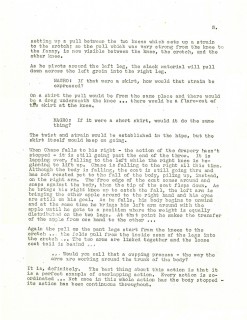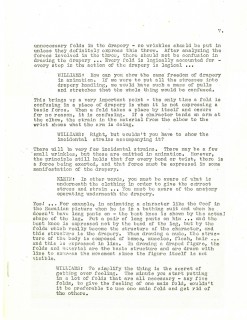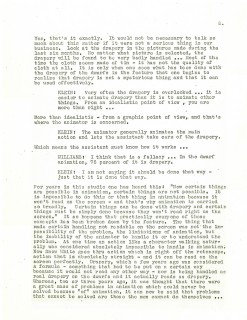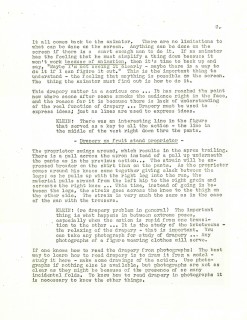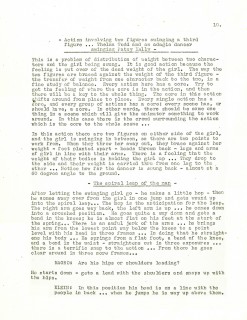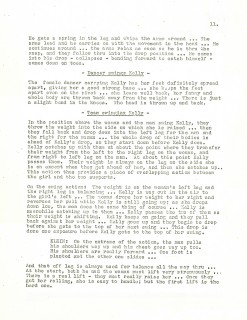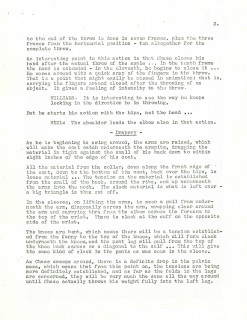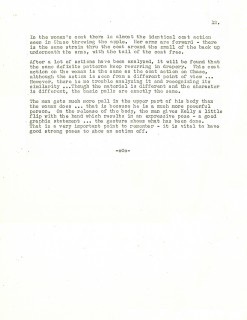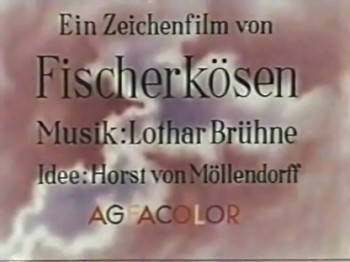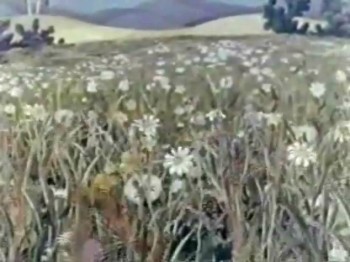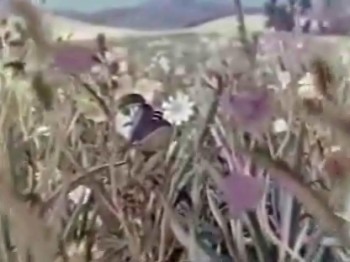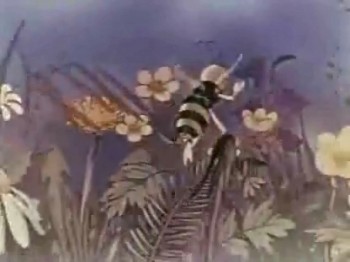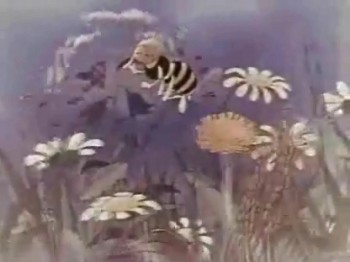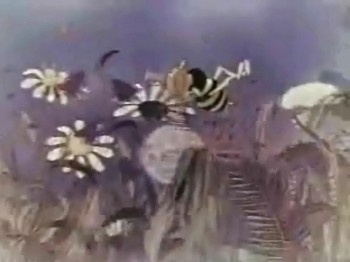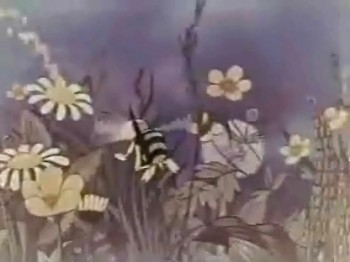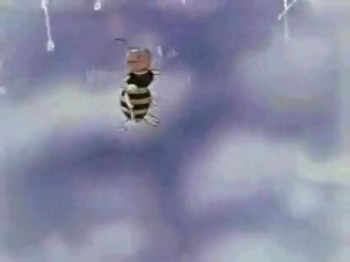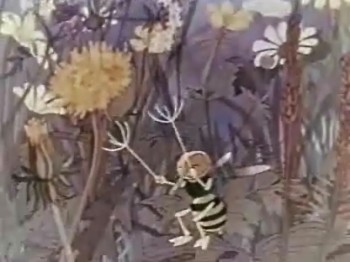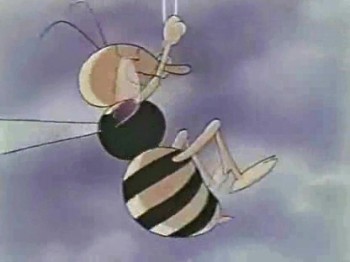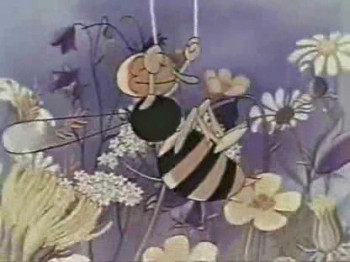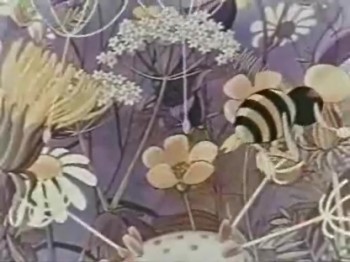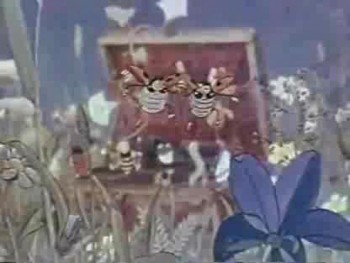Monthly ArchiveAugust 2011
Animation &Animation Artifacts &Disney &Tytla 31 Aug 2011 06:55 am
Tytla’s Laughing Gauchito – a recap
- In the past few weeks, I’ve been recapping all of the Bill Tytla scenes I’d posted in the past. This is the last of those done for Disney, and I’m pleased to have it back up again. I’ve taken both parts of the original post and have incorporated them into this one.
- In March of this year, I posted, in three parts, Frank Thomas‘ animation on the short that never went to completion, The Laughing Gauchito. John Canemaker brought me Bill Tytla‘s scene from this very film, and I’m posting all of the drawings here. As I’ve said, Frank Thomas animated his beautiful and emotional scene and Tytla did this one for a film that Disney, himself, cancelled. He felt it was too much a one gag story.
This one came with the exposure sheets!
You should look into J.B. Kaufman’s excellent book, South of the Border; it gives a full accounting of this film.
Here’s the artwork.
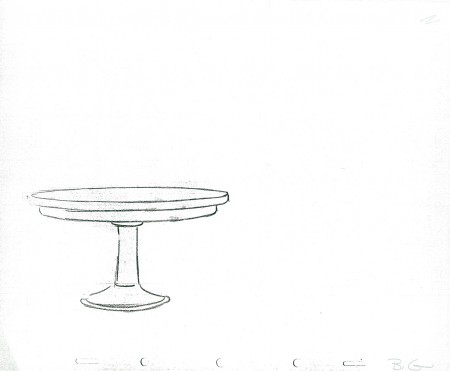
The Background
 1
1 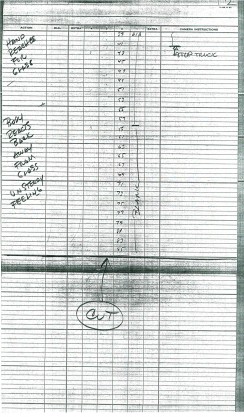 2
2
These are the X Sheets for the scene.
Here’s a QT of the scene with all the drawings included.
These are the links to the Frank Thomas scene: Part 1, Part 2, Part 3
Many thanks to John Canemaker for the loan of the scene.
Books 30 Aug 2011 07:26 am
Overdue Book Review – Tom Sito’s Drawing the Line
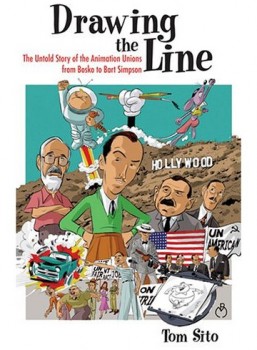 - There are a number of books I have been remiss about reviewing. For different reasons I’ve not been able to get to reading or reviewing or even commenting on several excellent books. I’ve decided to try to catch up with some of the more important ones.
- There are a number of books I have been remiss about reviewing. For different reasons I’ve not been able to get to reading or reviewing or even commenting on several excellent books. I’ve decided to try to catch up with some of the more important ones.
Note: I also have a problem with WordPress I am having difficulty resolving. It won’t allow me to save any post that has the word “u-nion” in it. I have to add the hyphen to get by with it. Since this book is about u-nions, please expect and forgive a lot of hyphens.
- Tom Sito‘s excellent book, Drawing the Line, is, to me, something of an important book. Other than Karl Cohen’s 1997 book, Forbidden Animation: Censored Cartoons and Blacklisted Animators in America, this is the only book to talk in depth about the Hollywood labor problems and the effect of the McCarthy-era blacklisting on animation. The politics of the different periods is crucial to the subject, and Tom Sito takes that in with ease clearly addressing the subject at hand.
My favorite chapter of the book comes at the beginning. Tom Sito has a charm and a wit in his style, and it comes across most abundantly here. He details lots and lots of small injustices the bosses have against the labor force. It’s all told with such humor, that it takes a while for the heinous conditions being described to be driven home.
 I imagine it was no mean feat to give both a history of animation, for those who are unfamiliar with it, and, at the same time, to go into depth with very specific data that breaks down the conditions and the actions that caused the strikes. There are three attempts at
I imagine it was no mean feat to give both a history of animation, for those who are unfamiliar with it, and, at the same time, to go into depth with very specific data that breaks down the conditions and the actions that caused the strikes. There are three attempts at
u-nionizing analyzed with detail within the book. _____ Fleischer strikers in front of the Fleischer studio, NYC, 1937. *
Smaller actions like
the Van Buren and Schlesinger studio strikes are dealt with in short order. The Fleischer, Disney, and Terrytoons strikes take whole chapters to review. All three created enormously heavy feelings felt by the participants even to the end of the century, though the actions had happened more than fifty years earlier. I’d witnessed conversations with members who were holding angry grudges against other members, whether because they had been scabs or had been participants in the u-nion organizing. Sito’s book gives clear descriptions of this and the reasons that caused the friction.
The Blacklist and the Hollywood Wars are likewise detailed and broken down in specifics. Though I’d had an interest in this period of animation history some of the book’s stats are new to me. I also like Sito’s discussion of the aftermath of the period – an anti-political wave that kept people from speaking their mind about their politics. It seems like a simple observation, but it’s obvious only after it’s relayed.
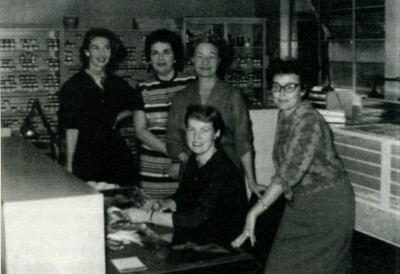 My second favored chapter comes as the book goes in the second half. “Lost Generations” sees into the latter half of the Twentieth Century after the “Big Five” studios have been u-nionized. Here we look into smaller studios from Clampett to Jay Ward to Ralph Bakshi. Depatie-Freleng to Chuck Jones. We see how a ___ LtoR: Sylvia Cobb, unknown, Mary Tebb, Phyllis Craig (seated)later generation of ________and Ann Lord. Ink & Paint women at Disney, 1957.*
My second favored chapter comes as the book goes in the second half. “Lost Generations” sees into the latter half of the Twentieth Century after the “Big Five” studios have been u-nionized. Here we look into smaller studios from Clampett to Jay Ward to Ralph Bakshi. Depatie-Freleng to Chuck Jones. We see how a ___ LtoR: Sylvia Cobb, unknown, Mary Tebb, Phyllis Craig (seated)later generation of ________and Ann Lord. Ink & Paint women at Disney, 1957.*
artists have less of a
connection to the u-nion, and this sets us up for the big chapter, “Animation and the Global Market.” Here we see the mega-money step in and just about wipe the art off the face of animation. We see how the employees turn on their own u-nion and allow the studios to hae the upper hand. As Don Bluth moves to Ireland for financial incentives with lower salaries and Steven Spielberg settles in London to make his lower budget features. Disney sets up studios in Australia and Canada to produce low budget feature sequels and reap in high grosses at the box office. (Just today I saw a TV ad for the “Special edition” of Bambi II, years after its production. If only the film were “Special.”) Tom Sito is intimately involved in this chapter having been part of the picketing work force, and you can feel it in the writing. It feels personal.
Since he had been President of Local 839 for a while, I would have expected him to be partial to the u-nion but was pleased to see a very fair view showing both sides of the u-nion’s history – positive and negative. It’s an engrossing book, and I’m sorry I didn’t turn to it earlier.
The one negative I had with the book were the many niggling little errors throughout. Some examples include:
- pg 17 says: “Ub Iwerks, working alone, animated Walt Disney’s 1929 short The Skeleton Dance.” In fact, it was Plane Crazy that Iwerks animated alone with only some small assistance from Ben Clopton. In fact, Les Clark took particular pride in animating a scene of a skeleton playing the ribs of another skeleton as if it were a xylophone
- pg 26 reads: “Mary Blair had once been called by Walt Disney ‘the best artist in the studio.’ Within a year of Walt’s death she had resigned, perhaps as a result of professional jealousy of a woman with that much importance.” In fact, Mary Blair had resigned from the studio in 1953, even before Peter Pan, a film she had designed, had been released. She came back to work with Disney on designing a couple of exhibits for the NY World’s Fair and then supervised their move to Disneyland. She was devastated by the death of Disney and left several years later. Her problems with alcohol probably had more to do with the retirement than any “professional jealousy of a woman with that much importance.”
- pg 156 calls Bill Walsh the new president of IATSE. (I was curious to know if this was the same producer who worked at Disney for many years.) No, we learn on page 158 that it’s RICHARD Walsh who is the president of IATSE.
- Page 211 goes from calling William Weiss, Bill Weiss to Bob Weiss and back again.
I also was a bit annoyed with the Index which does not list quite a few names. Mary Blair, who is mentioned at least half a dozen times doesn’t get in the Index, nor does Preston Blair. Rudolph Ising and Hugh Harman don’t make it either, Bill Walsh (who is really Dick Walsh) gets listed on pg 156 & 202, although that name is Dick Walsh on 202. I stopped looking at the Index pretty quickly.
There are many other errors like this, though all of the large and detailed, specific data about the strikes and u-nions seems accurate. This book which is filled to the brim with facts dates and figures obviously has most of them correct. Perhaps the book’s copy editor should have been more questioning.
This is a strong book, and if you haven’t already read it, I have to encourage you to do so. It’s a very particular history, and it has a lot to offer that isn’t available in other animation history books.
- Tom Sito has also authored several other books:
- He is the author of the revised version of my favorite “how to” animation book, Timing for Animation. It was originally written by Harold Whitaker with John Halas attaching his name (he probably got the publisher and not much more). Tom updated the book to include the cgi world. (To be honest, I haven’t seen the book; I only know the original – very well. Consequently, I have a hard time saying much about the revised version.)
He also has co-authored with Kyle Clark. Inspired 3D Character Animation is designed to show how to put Character into 3D animation and not just set key frames.
* picture 1 courtesy of MPSC Local 839, AFL-CIO Collection, Urban Archives Center, Cal State Univ., Northridge
* picture 2 courtesy of Anne Guenther and Archives of the Animation Guild, Local 839, North Hollywood.
Daily post &Frame Grabs 29 Aug 2011 06:41 am
The Multiplane Camera in Masaoka’s 1943 film
- Kenzo Masaoka was an early pioneer of Japanese animation. Masaoka established Masaoka Film Production In 1932 and gained the support of the company, Shochiku; together they produced “The World for the Power and Women†in 1933, which was the first talking film in Japan. He also introduced the use of cels to Japan. He produced many other films in the thirties and was considered the “Japanese Disney”.
In 1943 he created the short Spider and the Tulip. The film tells the story of a spider who lures a ladybug to its web. The spider, in blackface, is obviously a representation of the the American force trying to invade Japan. The innocent ladybug does its all to fight back. The film incurred the wrath of the military since it wasn’t obviously about the war.
The film, has extensive use of the multiplane camera throughout. Primarily, it’s used for pans and the look of depth in many of the still setups with the BGs out of focus. I’m going to post some frame grabs culled from a streaming video copy, which I also embed at the bottom of this post, so you can watch the film. Unfortunately, the frame grabs are small. I encourage you to go to Network Awesome where I was first introduced to this and several other Japanese classics. Cory Gross did an excellent job of analyzing these films.
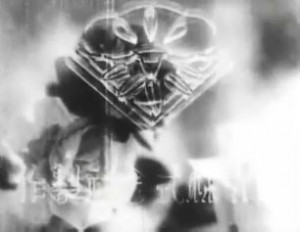 1
1The opening titles are against a
soft BG probably multiplane.
 3
3
The flower backdrops set the mood
for the delicate film to follow.
 4
4
The last title looks to be a constructed set
as the camera moves in on the tree.
 5
5
The camera move feels almost hand-held.
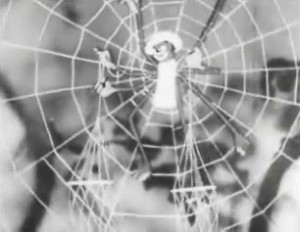 6
6
CU of the spider against a soft background.
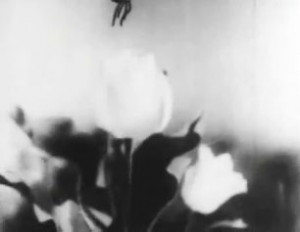 8
8
There’s a long pan of flowers as the fly
flies across the screen to the ladybug.
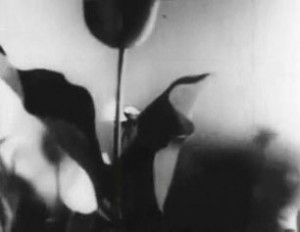 9
9
Flowers pass in multiplane levels.
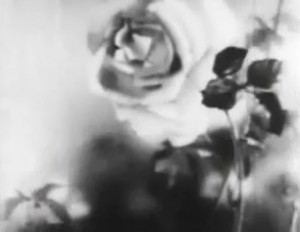 17
17
The pan ends on the beautiful rose.
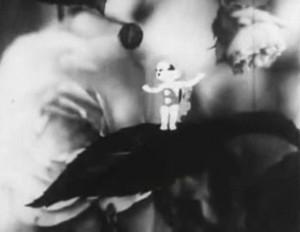 18
18
The ladybug stands on a leaf in the foreground, singing.
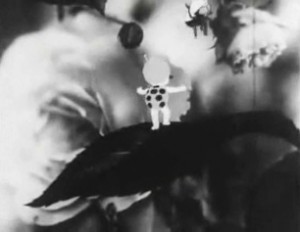 19
19
She turns as the fly enters the scene.
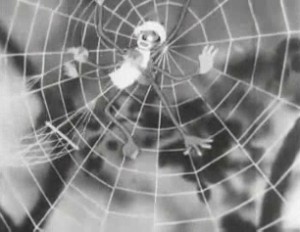 21
21
Cut to the spider who sings a response.
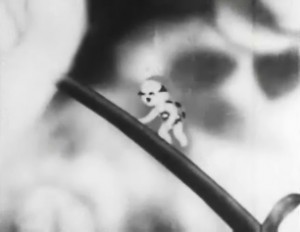 22
22
You can see that all the Bgs use the multiplane focus.
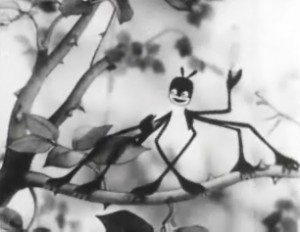 23
23
The spider moves closer to her.
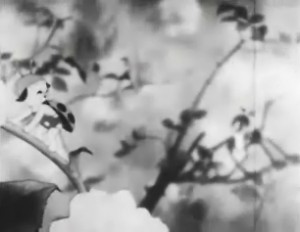 24
24
There’s a two-shot with the ladybug in focus
and the spider out of focus.
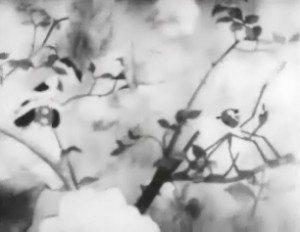 25
25
Rack focus and the spider comes in sharp.
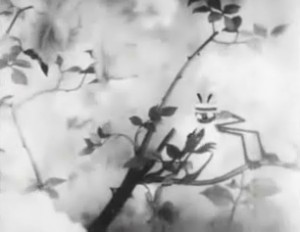 26
26
The camera moves in on the spider.
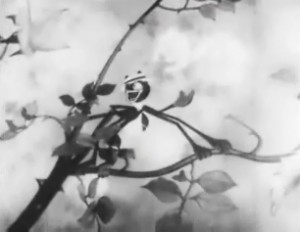 27
27
It goes in full on the spider.
 29
29
Later in the film, a storm comes up.
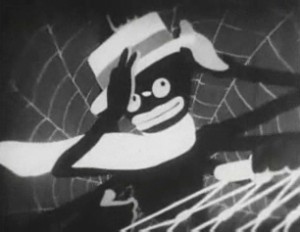 30
30
There are many attractive shots within this sequence,
and I urge you to watch the film, embeded below, for it.
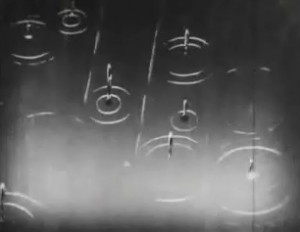 32
32
This is quite an interesting film regardless
of the year it was created in Japan and the
enormous struggles going on in that country.
.
Photos &Steve Fisher 28 Aug 2011 07:21 am
European Manhole Covers + recap
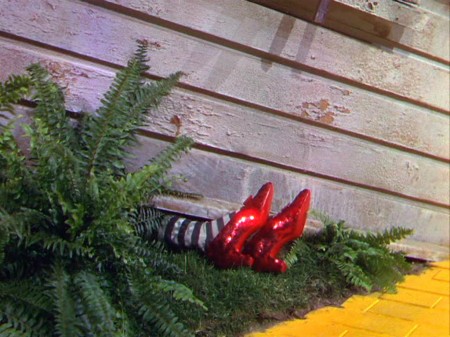
11am follow up: Just got the news from my superintendant who said there were no problems. No flood, no debris, no broken windows. All I have to do is put the books back and the rugs on the floor and we’re back in business. Funny that this Hurricane wasn’t as bad as the storm we had two weeks ago. We had 6 inches of rain from the hurricane and 2 inches from the storm, but the storm was incessantly heavy; the hurricane was on and off. It gave the sump pumps time to push whatever water out.
7am report: I’ve been inside all night Saturday and this morning, Sunday. The rain is beating loudly on the skylight. It comes in loud then soft waves. I assume the studio will reap the damage, but I won’t call the superintendant down there until this afternoon. He’ll tell me what’s what. I assume I’ll be mopping tomorrow.
We don’t expect the subway back until midday tomorrow (if the subway lines haven’t been flooded.) There’ll be a lot of walking after this storm passes later today today and tomorrow.
I don’t think it’ll be too bad.
______________________
- Steve Fisher sent me the following shots of manhole covers he photographed in Greece and Naples. This also gives me a chance to post a recap of my post from August 2007. Thanks to Steve for the pictures of European edition manhole covers.
 1
1from Mykonos
 – When I was in the sixth grade, I had an extra-ordinary teacher who left me with a lot of memories. One of them was his reading of Edgar Allan Poe’s short story The Casque of Amontillado, which chilled us all to the bone as we sat in those little student desks absorbed and thrilled and forevermore fans of Poe.
– When I was in the sixth grade, I had an extra-ordinary teacher who left me with a lot of memories. One of them was his reading of Edgar Allan Poe’s short story The Casque of Amontillado, which chilled us all to the bone as we sat in those little student desks absorbed and thrilled and forevermore fans of Poe.
Another memory was his asking us all if we knew why manhole covers were round. After a number of stupid guesses, we were told the reason – any other shape would allow the covers to fall into the hole. If they were squared or triangular, they could be maneuvered onto their side until they fell in. Round objects wouldn’t fall.
He also told us that manhole covers in NYC were like snowflakes – no two were alike. This I found hard to believe until I started looking. He was right; they were all different in design. Markedly different in design. I looked for years and thumbed my way through many books admiring the designs I found.
Times have changed. Now they come in only a couple of designs.
 _
_
Con Edison is now the primary user for manhole covers, and they seem, these days, to have boiled down to four basic designs. See the two above and the two below.
 _
_
(Click any image to enlarge.)

The Department of Public Works features this handy little design. I like its simplicity very much. the color also makes it unique.
 _
_
Above left you can see an older model that is wearing down. Parts of the design are blending into other parts almost making a new shape. Above right you see an interesting model. There’s a cover within a cover. The smaller model seems to fit within the larger model, and both can be pulled out. Very interesting. There were three or four of these in the same area around 23rd Street.
 _
_
These manhole covers have been fitted into what were obviously larger spaces.
The concrete circle, above left, fills in for an earlier, larger model manhole cover.
Above right, you see a round cover in what was once a square hole.

The busy minimalism of this design works very well with the cracked asphalt around it.

Here we have an interesting model. No design. I guess some would say that that’s
a design in its own right.
If you look on line, you’ll find a lot of information and photos of manhole covers. It’s amazing how big an industry is manhole cover watching. There are many books on the subject, many websites and lots of photographers who specialize in it. I have to direct you to one Roland Muhler. His work is stunning. I’ve posted three of his NYC photos just below. He has many international manhole covers on his site.
Another site which gives a lot of attention to manhole covers is Manhole Covers etc. The site is subtitled: “I’ve been looking down so long, I don’t know which way looks up.” Here you’ll find some history, links and photos from across the US as well as around the world.
Through this site I found a Russian site called Sewers of the World, Unite. There’s plenty of information and links here as well as some excellent photos. The images below are Russian designs from this site.
On the site, the history of sanitary sewers, I found this document (pictured to the right) 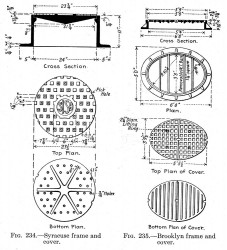 which gives a good view of a plan for some manhole covers. One cover is designed for Syracuse and another for Brooklyn.
which gives a good view of a plan for some manhole covers. One cover is designed for Syracuse and another for Brooklyn.
I also learned in my small amount of research that most of the covers done for NY’s manholes are made in India. I imagine the shipping charges would be enormous.
I presume that the manhole covers are now made of steel whereas they originally must have been molded of iron (and which would have broken when dropped.) I also learned that the sewers once had a hard glass built into the sidewalk openings so that light could enter. Pre electricity must have made working below ground difficult.
I should say more difficult. It’s not a job I’d like.
Commentary 27 Aug 2011 07:02 am
Saturday Scribbles
 - There’s a panic going on throughout New York and New Jersey. NYC is scheduled to be in the direct line of Hurricane Irene. Meteorologists have, at last check, scheduled the eye of the hurricane to pass over Manhattan. Should be fun.
- There’s a panic going on throughout New York and New Jersey. NYC is scheduled to be in the direct line of Hurricane Irene. Meteorologists have, at last check, scheduled the eye of the hurricane to pass over Manhattan. Should be fun.
On Thursday night – two days before the storm hit – Gov. Chris Christie declared a “state of emergency” in New Jersey. Since it was barely raining on Thursday, I thought that was a bit of cheek, but perhaps the Mad Gov is afraid of what may happen. You’re in good hands in N.J. Oh wait, Cuomo did the same on Friday in NY.
Mayor Bloomberg, on the other hand, took his
 own steps. He demanded evacuation of some hospitals and senior centers that seemed to be in the way of the storm. He also announced that ALL mass transit would be halted during the course of the storm. That means from Saturday noon to Monday morning, who knows when, there’ll be no buses or trains running. I guess we’ll have to walk to make it work when the expected hurricane passes Sunday afternoon.
own steps. He demanded evacuation of some hospitals and senior centers that seemed to be in the way of the storm. He also announced that ALL mass transit would be halted during the course of the storm. That means from Saturday noon to Monday morning, who knows when, there’ll be no buses or trains running. I guess we’ll have to walk to make it work when the expected hurricane passes Sunday afternoon.
Of course, as I recently detailed, I assume there’ll be flood conditions inside my studio and have taken a lot of preparations. The last will be to get the cat to higher ground for the duration. He’ll come back with me to my apartment to face two other cats who live there. Lots of hissing and spitting expected atop the heavy sound of rain on the skylight. I’m not looking forward to the aftermath. Though maybe, like the last hurricane, it’ll be all panic and little reality. That’d be nice.
- This past Monday, it was a beautiful day in New York. Under the shadow of the Empire State Building, that evening, there was a program of early and late Bill Plympton films showing at the Big Screen Plaza.
 This is an outdoor arena with a very big screen overlooking a food court. Lots of tables and seating places around a rectangular fountain makes for a pleasant ambience for watching animation. They’ve finally gotten it together and have their sound problems repaired (something encountered at a couple of earlier screenings this Summer.)
This is an outdoor arena with a very big screen overlooking a food court. Lots of tables and seating places around a rectangular fountain makes for a pleasant ambience for watching animation. They’ve finally gotten it together and have their sound problems repaired (something encountered at a couple of earlier screenings this Summer.)
As the films played overhead, Bill sat at a table in the back where you could buy a copy of some of the cartoons, or his big book. Or, you had the chance just to meet Bill.
The center film of the program was a screening of Bill’s first feature, The Tune. It’s been quite a while since I’d seen this film, so it was a pleasure to rejoin it. The Tune feels like early Plympton, and that’s a wonderful thing. Lots of metamorphosis and surprise distortions and complete nonsense thrown your way, all to the score of songs played throughout, as the lead character searches for a hit tune.
And, as I said, the weather was brilliant.

Bill Plympton, as ever, was the gracious host.

Jaime Ekkens is the coordinator for all Big Screen events.

The film played overhead in the beautifully crisp NY evening.
________________________
- On the Ghibli Blog recently, there have been a number of key posts. Principal among them was the news that Madhouse Productions in Japan has stopped work and pulled all production on the completion of The Dreaming Machine, Satoshi Kon‘s last film. When Kon died last year the studio, under the supervision of designer Yoshimi Itazu, was continuing work on the film. It’s obvious that budgetary cuts have stalled this work and have put it into a full stop even though work was half done. It’s questionable if the film will continue work and complete this master’s final production. Satoshi Kon, of course, is the director of “Millennium Actress”, “Tokyo Godfathers” and “Paprika.”
- Back on Aug 12th, the Ghibli Blog posted this CNN video, an interview with Hayao Miyazaki about the formation of Studio Ghibli. He talks about the inherent problem of an animation studio: at first you form the studio to do the work; then it gets so you do work to keep the studio running. The cart pulls the donkey.
________________________
I received the following note and request, this week. I thought it worthwhile to promote it:
- I’m a recent graduate of California State University, Northridge’s Animation program, and I’ve recently released my final short film online. Tanks for Nothin’ is a fun little 50′s, retro cartoon about an imaginative tomboy named Lucy, who uses her creativity to get back at her mean older brother. I spent a year developing and animating “Tanks”.
It’s got a great musical score, and every last frame has been lovingly assembled. The only thing it’s lacking is an awesome sound design. I’ve been approached by a talented Sound Designer from an Academy Award winning animated short, who’d like to collaborate on my film. I’m using Kickstarter.com to raise the funds for the sound studio overhead.
If you’re not familiar with Kickstarter.com, it’s a site that helps art projects raise funds from online backers in exchange for rewards. In the case of my project, backers can earn original signed artwork (I’m just starting out, but I plan to make great animated stories for years to come – this is a chance to get my “Rookie card”), a DVD of the finished film, movie posters, and even their name in the credits. I’ve heard most projects are funded by under 5 dollar pledges. Kickstarter is an all-or-nothing platform, so if the project doesn’t reach its goal no money changes hands.
If you think this is a worthwhile project please help out by telling your friends about it via Facebook, Twitter, Tumbler, Linkedin, etc. I really need help getting the word out there (I only have until Monday Aug 29, 3:02am ET. left to raise the funds).
Tanks for Nothin’ site.
I don’t intend to turn my site into an open venue for everyone, but thought this project of interest, and I hope it does well.
- I also wanted to post a reminder that Grayson Ponti has one of the best blogs out there (for animation freaks, that is.) The 50 Most Influential Disney Animators offers good bios and passable critiques of many different Disney animators, past and present.
Of course, the two inherent problems with the site are that many great and brilliant animators didn’t work for Disney. They’re all left out.
So, too, are all the wonderful story artists/writers and production designers that have seriousl affected the films (both Disney and non).
Bill Peckmann &Comic Art &Illustration 26 Aug 2011 06:54 am
Early Jack Davis
- Bill Peckmann has sent a number of early Jack Davis crawings our way, so let me turtn it over to Bill:
- After Jack left EC/Mad Comics in the late ’50′s, after Harvey Kurtzman’s “Trump” and “Humbug” magazine’s didn’t get the solid footing they so richly deserved and went belly up, and before Jack carved out that wonderfully successful niche for himself in the world of humorous illustration in the ’60′s, he had to really scramble for work to keep the wolf from the door. Here are some examples from that period from late 1958 to 1961. Jack would say that some of this art was done in his “fast” style.
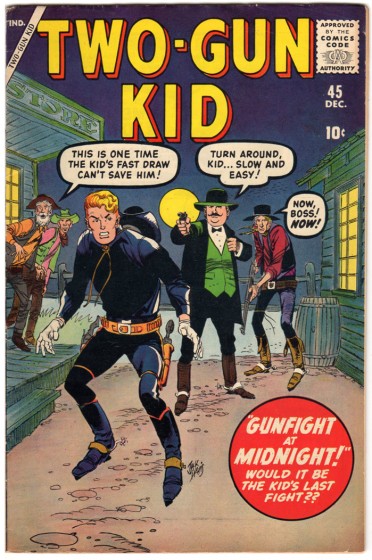 1
1These first four western covers were done for
Stan Lee for Atlas Comics, later to become Marvel Comics.
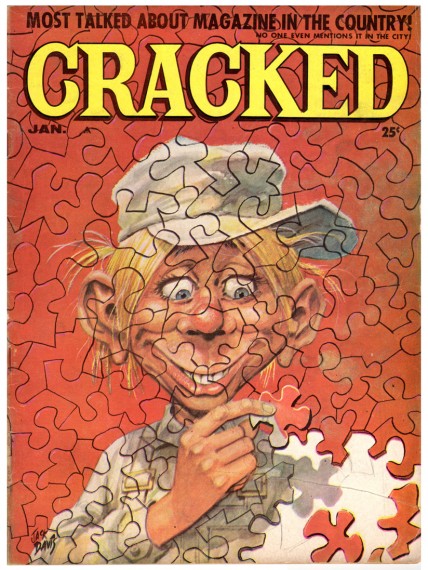 5
5
A cover for “Cracked” Magazine, Mad’s longest running rival.
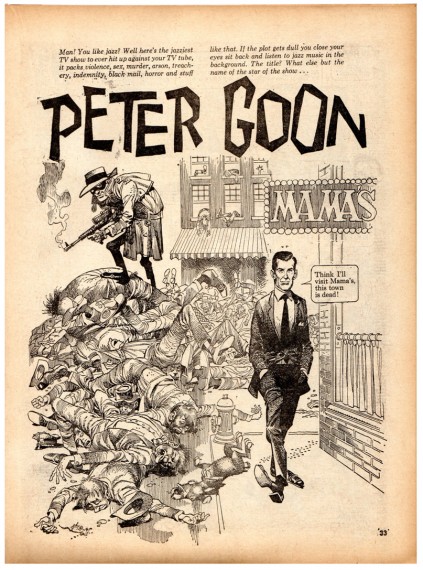 6
6
4 B&W pages from inside “Cracked”.
The first 3 pages are a spoof on TV show “Peter Gunn”.
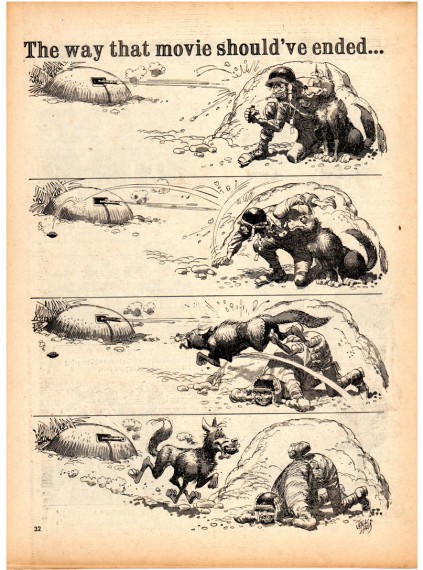 9
9
A single page (Kurtzman type) gag.
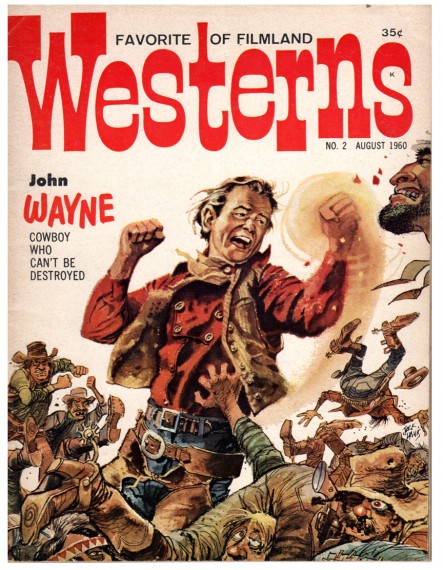 10
10
This western magazine was published by Jim Warren
who also published Harvey Kurtzman’s “Help!” Magazine.
It was rumored that Harvey was also the editor of this book,
I don’t know about that.
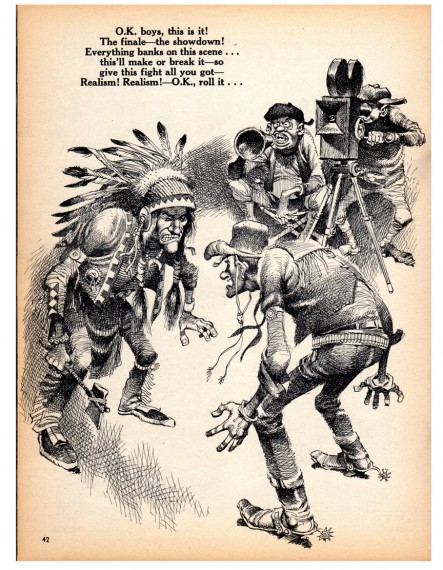 12
12
A 3 page gag from “Wildest Westerns”.
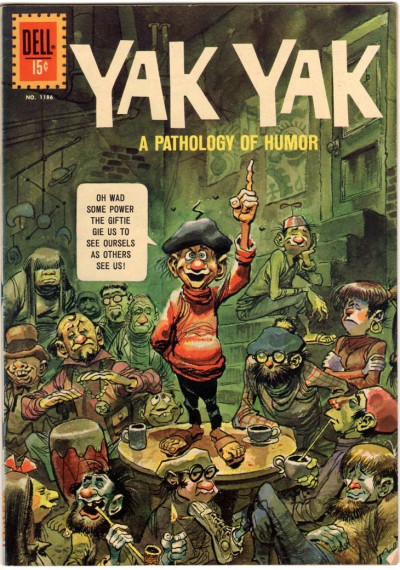 16
16
Believe it or not, Jack actually did a Dell Comic book.
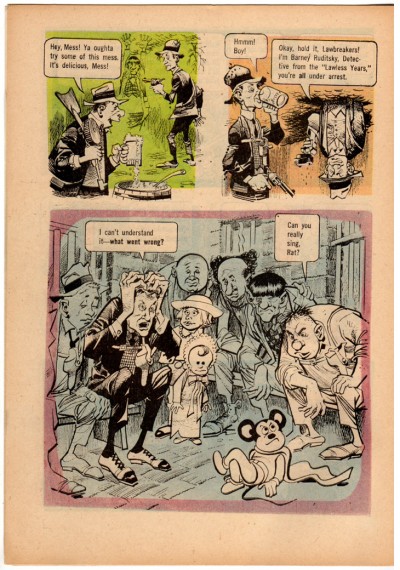 20
20
All the art was sent in the chronological order it was done.
Animation &Independent Animation 25 Aug 2011 07:26 am
Note from Borge
- Mike Barrier had posted a great letter from Borge Ring about David Hand and animation timing. I responded with a short note. I thought I’d written that I wish Hand, who had an enormous knowledge of animation, had said more about the subject in his autobiography. Instead, the book was about his life not about the work he did for his life. Borge Ring misunderstood my badly worded comment on the site, and wrote a letter to me about it. A couple of letters later, things were straightened out, and Borge had written even more wonderful stuff about David Hand’s knowledge. I asked to print that note, and Borge gave permission.
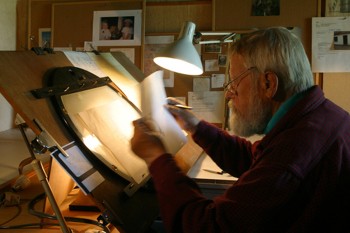 Dave (Hand) was good at rages. They say -When Walt toppled Dave’s well planned day schedule in midmorning, Dave stood at Walt’s office gripping the table with white knuckled hands.blasting Walt.
Dave (Hand) was good at rages. They say -When Walt toppled Dave’s well planned day schedule in midmorning, Dave stood at Walt’s office gripping the table with white knuckled hands.blasting Walt.
Disney later reminisced, “He didn’t know that I never loved him more than at those moments because he cared”
John Canemaker is bound to have Dave’s Cookham lectures – One of them deals specifically with exposure lengths.
I remember a remark:
“6 frames is a hold – 4 frames is neither hay nor grass.”
He never mentions 3 frames.
Preston Blair puts in 3s in the endscene of “Dance of the Hour ” – Croc twirling Hippo, but you don’t notice they are threes.
On request Dave talked about timing to a beat. (the old Jaxon gambit):
“Disney uses many beats but mostly 12 and 8 – because they are easy to break down into inbtws -”
An 8 beat (metronome on 180) with keys 1 – 9 – gets inbtw 5 in the middle and later 2 and 4 -
A 12 beat (metronome on 120) has 1 – 13 -with 7 in the middle
But Duncan and Littlejohn knew all of this and could have told you if you did not already know.
Dave was not very conversant with music and his musician told him to think in (numbered) bars of four beats each, and gave the following rule of thumb, “Place all strong accents on 1 and on 3 in the bar and you will never get me into trouble”
Dave added “You can place your strong accents wherever you choose as long as it makes sense musically.”
“When lengthening or shortening a passage on your barsheet, never add or subtract less than one beat.”
When adding a foot to the timing he did not rewrite the barsheet.
He cut out one line of a virginal barsheet wrote on it and stuck it on to the rim of the sheet. Therefore you got barsheets with “whimpers” sticking out or empty lanes if you had deleted some beats to shorten a passage.
When the barsheet was final he rewrote the numbers of all bars.
Dave animated a little film one afternoon – working to an 8-beat. He drew 1-9-17 -25-etc in very thin grey lines then added all inbtws thinly, flipped and went over the whole scene straight ahead with a fat black line.
He was fast like lightning though he had not animated since 1934
“How do you choose a director?” I asked
“You take a very good animator who is known for getting along with people.”
The new director doesn’t animate, and after awhile they begin to miss his good footage. “Animation developed by leaps and bounds and
after a year the other animators have passed him in quality.”
“Have any of you any experience in story?”
“Oh yes – Jensen and I storyboarded this guy’s script for a feature.”
“But that isn’t story. That is only continuity And that is easy – that is eh if.
Hand and Geronimi stuck to their pleasant style of timing when shorts directors like Jack Hannah sharpened theirs under influence from certain other studios.
Michael,
All this is memory debris that YOU no longer need – But I know It is a warm feeling to hear the “sound” of Old Gold from someone who was in Walt Disney’s studio when “the things” happened.
Kaj Pindal and Kimball were railway pals
“Ward give me the magic feather on animation.”
“Timing is everything,” was the answer.
greetz
Botge
A three stagger 123 -234 – 345 – when shot on twos makes the character look VERY heavy There is one such in “Robin Hood”
By the way, there’s also a wealth of information in Mike Barrier’s interview with David Hand on Mike’s site.
Animation &Animation Artifacts &Disney &repeated posts &Tytla 24 Aug 2011 07:09 am
Baby Mine recap
To continue with all things Tytla, here’s a representation of the “Baby Mine” sequence from Dumbo. This is one of my very favorite sequences in one of my favorite animated films. The newish Blue Ray version of this film is excellent except for one thing. The commentary on this disc pales in comparison to the 60th Anniversary DVD. The original was done solely by John Canemaker and is enormously informative. I wish John would just turn that track into a book.
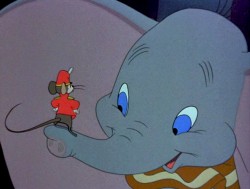 - Dumbo is certainly one of my favorite Disney features if not THE favorite. Naturally, the “Baby Mine” sequence is a highlight. The sequence is so tender and fine-tuned to appear straightforward and simple. This, of course, is the heart of excellence. It seems simple and doesn’t call attention to itself.
- Dumbo is certainly one of my favorite Disney features if not THE favorite. Naturally, the “Baby Mine” sequence is a highlight. The sequence is so tender and fine-tuned to appear straightforward and simple. This, of course, is the heart of excellence. It seems simple and doesn’t call attention to itself.
This is a storyboard composed of LO drawings from the opening of that sequence. They appear to be BG layouts with drawings of the characters cut out and pasted in place.
It’s not really a storyboard, and I’ve always wondered what purpose such boards served to the Disney machine back in the Golden Age.
Below is the board as it stands in the photograph.

_____________(Click any image to enlarge.)
Here is the same photographed board, split up so that I can post it in larger size. I’ve also interspersed frame grabs from the actual sequence for comparison.
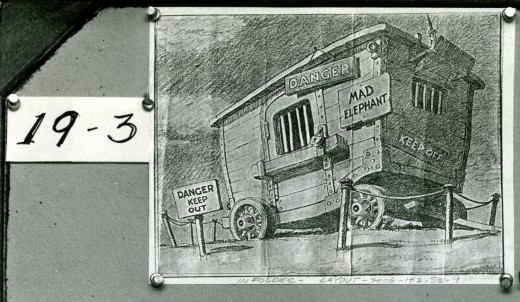
Thanks to Steve MacQuignon for locating this video.
Info from Hans Perk at A Film LA:
Directed by Bill Roberts and John/Jack Elliotte, assistant director Earl Bench, layout Al Zinnen.
Animation by Bill Tytla (Dumbo & Mrs. Jumbo’s trunk), Fred Moore (Timothy) and assorted animals by Bob Youngquist, Harvey Toombs, Ed Aardal and John Sewell.
Hans Perk has posted the drafts for Dumbo, and this has led Mark Mayerson to post the brilliant Mosaics he’s created for the film.
Action Analysis &Animation &Disney 23 Aug 2011 08:06 am
Action Analyisis – April 26, 1937
- These are the notes for the Disney studios after hours classes on Action Analysis give on April 26, 1937.
The action they studied was a loop from a Charlie Chase film wherein he throws apples from a fruit stand while the attendant tries to stop him. They are particularly studying the drapery involved. Don Graham, as usual, conducts the class with involvement from: Roy Williams, Milt Neil, Joe Magro, Rose, (Ray?) Patin, and Izzie Klein.
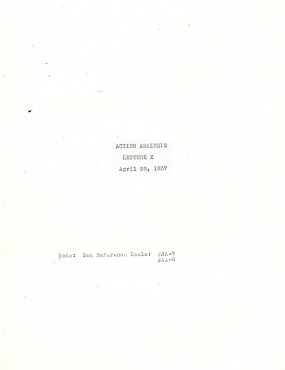
Cover sheet
Just a reminder that there are many more Action Analysis class notes on Hans Perk’s invaluable site, A Film LA.
Animation &commercial animation 22 Aug 2011 07:26 am
The Multiplane Camera of Hans Fischerköesen
- Hans Fischerköesen was an animation pioneer in Germany. Because of his asthma, he could not fight in World War I but was sent to work in Army hospitals. Having produced a very popular ad for a shoe company, he established his Fischerköesen Studio in Leipzig to specialize in advertising films. By 1937, he’d won both first and second prizes at a Dutch-sponsored competition for commercials with the runners up including George Pal and Alexander Alexeieff. By this time, Fischerköesen had made around 1,000 publicity films.
When World War II broke out, German cinemas lost the distribution of Disney and other animated shorts. Goebbels sought someone to fill the bill for a German animation studio. Fisherkösen got the job, but received the mandate to work with Horst von Möllendorf, a popular Berlin newspaper cartoonist, as a gag writer-storyman. He was also required to compete with Disney and Fleischer using multiplane effects.
The first film they did, Weather-beaten Melody (1942) almost shows off the technique with a bravura sequence using both the multiplane and stereo-optical processes. It’s this opening sequence that I’m featuring in this post; this is far beyond anything done even in subsequent films. Unfortunately, these frame grabs come from a streaming video, so the quality leaves a lot to be desired.
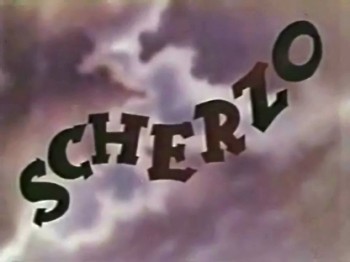 1
1The opening title – Scherzo
 3
3
When the credits fade off, the sky opens up.
 4
4
The camera pans down to a field of flowers.
 6
6
The camera moves right into those flowers.
This is obviously a stereo-scopic set, much like the Fleischer camera.
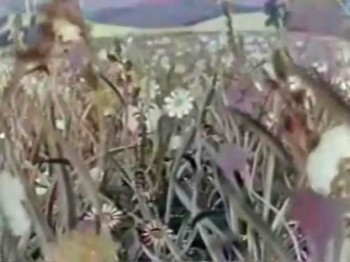 8
8
The camera moves in among the flowers.
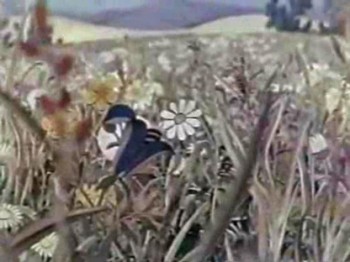 12
12
It reaches a point, and stops.
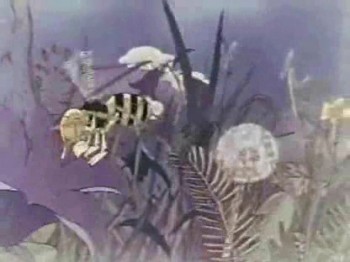 13
13
Cut to our main character, a bumble bee.
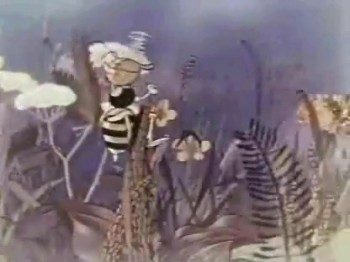 14
14
The bee seems to float in the air rather than fly.
Very odd animation, very attractive multiplane setup.
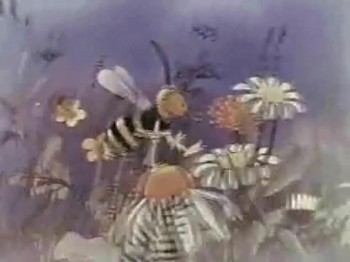 15
15
This is a very long pan, with many multiplane levels.
 20
20
The bee flies INTO a dandelion.
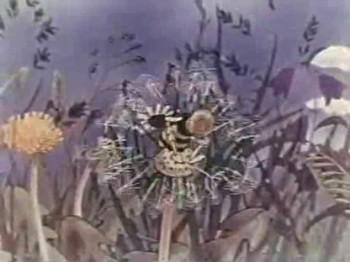 21
21
He sneezes breaking up the dandelion.
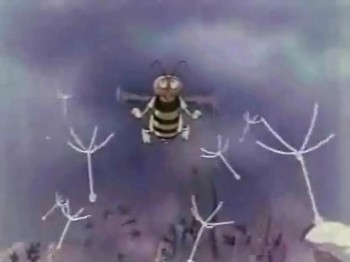 22
22
The bee flies up toward the sky with
dandelion bits all about him.
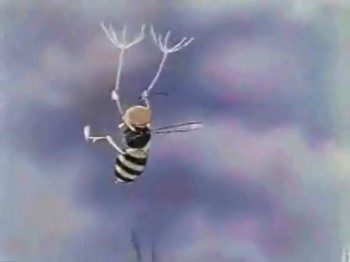 24
24
The bee grabs two fronds of the dandelion
to slow his descent to the ground.
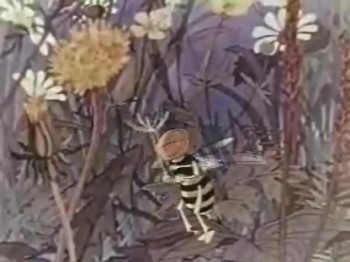 26
26
It folds up the dandelion buds as if
they were umbrellas.
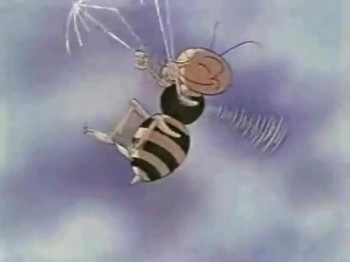 28
28
Again the bee uses the “umbrellas” to float mid-air.
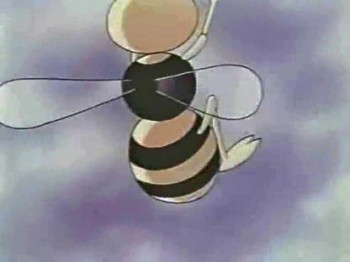 29
29
The bee moves toward the camera in a forced perspective.
The film moves on to follow the bee who finds a gramophone in the grass. With its stinger the bee is able to play the music on the record for the other bugs.
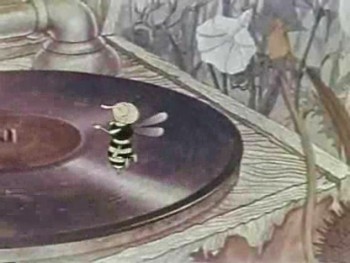 1
1At first the record doesn’t move.
It’s the bee who runs in circles.
 2
2
We pan from the bee in a multiplane shot
toward some other bugs . . .
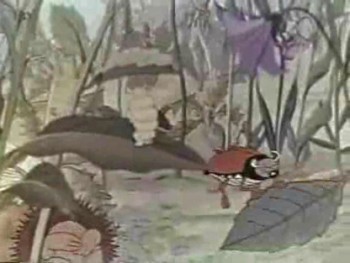 3
3
. . . who are dancing to the jazz music.
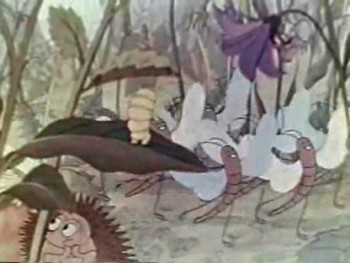 4
4
There’s a group of “June Taylor” type dancers.
The animation is probably rotoscoped, though it’s well done.
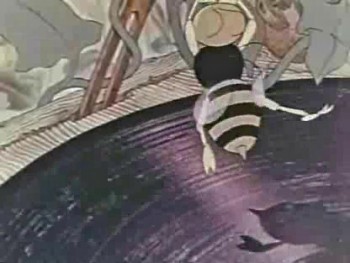 5
5
The bee was exhausted from running in place,
so other bugs and a frog turn the record.
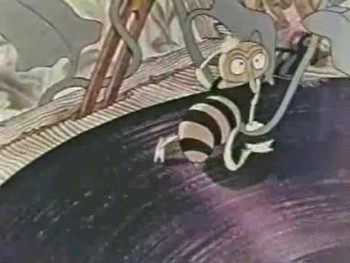 6
6
The bee still falls into exhaustion.
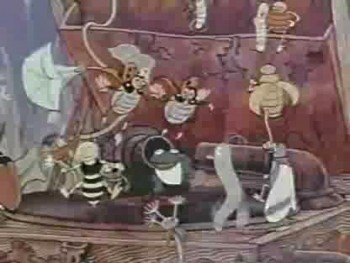 7
7
The final shot shows an overview of the gramophone
and all the bugs getting the music to play and dancing.
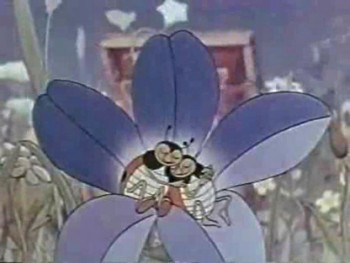 9
9
. . . in another beautiful multiplane shot.
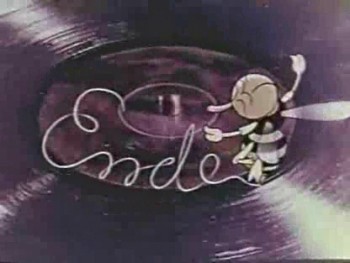 10
10
We end on the bug writing “Ende” with his stinger.
Here is a QT of the movie:
You can find an excellent biography of Fischerköesen by William Moritz here.
He also did several other films during the War. The Snowman (1943) and The Silly Goose (1944). Both use the multiplane, though The Silly Goose uses it in a rather unorthodox way. It’s truly daring.
Fischerköesen continued to make advertising films until 1969, and died in 1973.
The Snowman is part of the DVD The Golden Age of Cartoons: Cartoons for Victory! This is part of the excellent product produced by Steve Stanchfield of Thunderbean Animation.
As I mentioned earlier, the quality of the frame grabs has a lot to be desired. You can find better ones on Hans Bacher’s wonderful site, One1More2Time3′s Weblog. Also there are other films including some of the advertising films.
There is also a letter in the comment section of Hans’ site. I thought it interesting enough that I copied it here:
- from MariaElena Kadala
This were my grandfather’s films … I’m trying to get these pictures into Wikipedia articles about the films, without success. Perhpas you can do it?
While he was imprisoned by the Russians after the war (having been accused of being a Nazi) they asked his workers to provide the secrets of his techniques. They made a duplicate copy of all information, which I inherited, being the lone “techie†among many artistic heirs.

